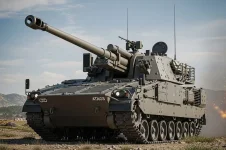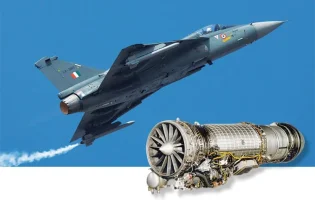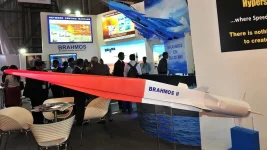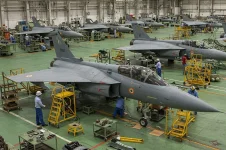- Views: 2K
- Replies: 25
The Indian Army is moving forward with a significant procurement process for 400 new 155mm/52 caliber Towed Gun Systems (TGS), valued at approximately ₹6,500 crore. This tender is part of a larger plan to eventually acquire nearly 1,500 such units under the Army's Field Artillery Rationalisation Plan (FARP).
Amidst intense competition from major Indian defence manufacturers, Kalyani Strategic Systems Limited (KSSL), part of the Kalyani Group, is reportedly gaining an edge with its Bharat-52 artillery gun.
Sources within the defence industry indicate that KSSL's established manufacturing capabilities and potential ability to offer the Bharat-52 at a considerably lower price point could make it the leading contender.
This perceived advantage positions KSSL potentially ahead of competitors including Tata Advanced Systems Limited (TASL) and Larsen & Toubro (L&T). The Bharat-52's cost is speculated to be nearly half that of the recently ordered Advanced Towed Artillery Gun System (ATAGS).
Developed by Bharat Forge, another Kalyani Group company, over ten years ago, the Bharat-52 is a 155mm/52 caliber towed howitzer. It boasts a range of 42 kilometers and weighs less than 15 tons, meeting the Army's requirement for a lighter artillery piece. KSSL benefits from having an existing production infrastructure and extensive experience gained through years of internal research and development.
Reports suggest KSSL might propose the Bharat-52 at a unit cost of around ₹11-12 crore. This compares favourably to the estimated ₹22.8 crore per unit cost of the ATAGS, derived from the recent ₹7,000 crore contract for 307 units awarded earlier this month (March 2025) to KSSL and TASL. KSSL's cost efficiency is attributed to utilizing its current facilities, thus avoiding substantial new investments needed by competitors to set up similar production lines.
The aforementioned ATAGS contract was divided 60:40, with KSSL securing the larger share (184 guns) as the lowest bidder (L1), while TASL received the order for 123 guns. KSSL aims to maintain this competitive edge in the new TGS tender.
Baba Kalyani, Chairman of the Kalyani Group, has previously stated that the company's Pune facility possesses the capacity to produce "one gun per day," equating to over 350 guns annually. This production scalability seems well-suited to meet the Army's initial 400-unit requirement and the longer-term goal of 1,500 guns.
Furthermore, KSSL has a well-established supply chain for critical components like barrels and breech mechanisms, making the Bharat-52 a readily available and potentially cost-effective option.
Competitors face different scenarios. TASL, despite its role in the ATAGS program, would likely need to modify its existing design or develop a new, lighter gun variant specifically for the TGS tender, which would involve additional design and production setup costs.
L&T is collaborating with the state-owned Advanced Weapons and Equipment India Limited (AWEIL) to offer the Dhanush 155mm/52 caliber gun. This is an advanced version of the 155mm/45 caliber Dhanush already inducted into the Army, which itself is an upgraded Bofors design.
While the Dhanush benefits from AWEIL’s existing manufacturing base in Jabalpur and potentially lower development costs due to its public sector undertaking (PSU) heritage, its estimated unit cost (around ₹14.5 crore for the 45-caliber version) might increase for the 52-caliber model. The partnership model could also impact L&T's ability to compete on price against KSSL's integrated approach.
The TGS tender falls under the Buy (Indian-IDDM - Indigenously Designed, Developed and Manufactured) category, which stipulates that the equipment must be designed, developed, and produced within India with a minimum of 50% indigenous content. The Bharat-52 readily meets this requirement.
KSSL's long-term R&D has equipped the gun with features like an auxiliary power unit (APU) and an autoloading system, aligning with Army needs for mobility, automation, and firepower.
The Bharat-52 has also undergone trials with international customers, including Saudi Arabia, indicating its maturity. While the Dhanush platform is proven, adapting it to the 52-caliber configuration might present unforeseen technical hurdles, although AWEIL's experience makes significant technical failure unlikely.
Ultimately, cost is expected to be a critical factor in the Army's decision. At a potential ₹11-12 crore per unit, the Bharat-52 offers a nearly 50% cost reduction compared to the ATAGS unit price.
For the initial 400-gun order, choosing the Bharat-52 could potentially save the Ministry of Defence around ₹4,000 crore compared to procuring ATAGS-equivalent systems at the recently established price point. This significant potential saving, combined with KSSL's production readiness, makes the Bharat-52 a compelling option as the Indian Army continues its artillery modernization efforts.
Competitors like TASL and L&T may find it challenging to match this price without affecting their profit margins, given the need to recover costs associated with new or adapted production lines.




